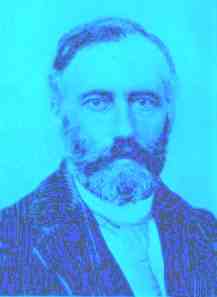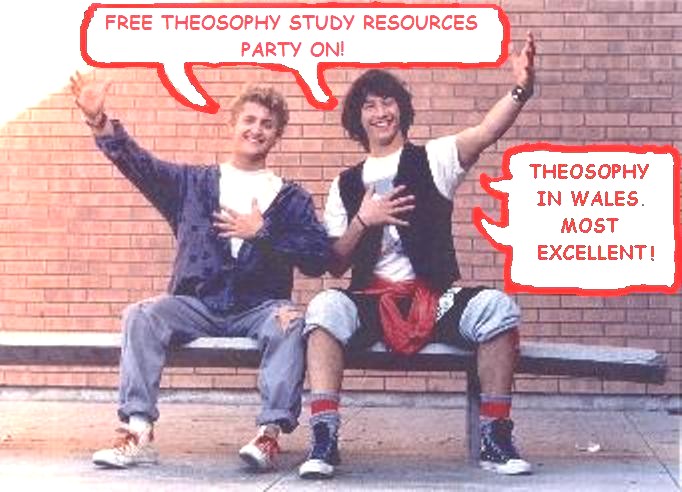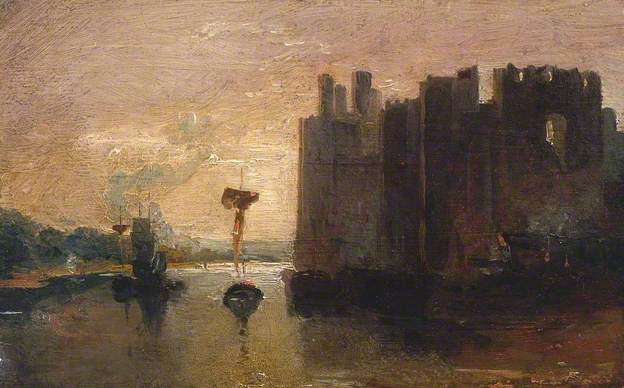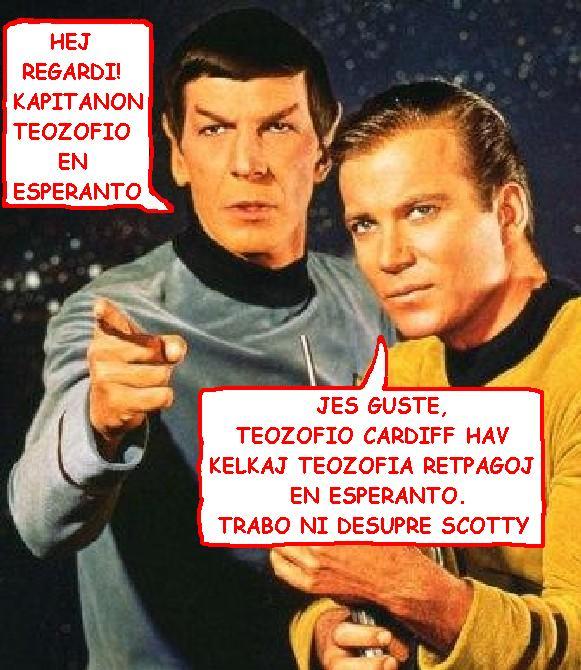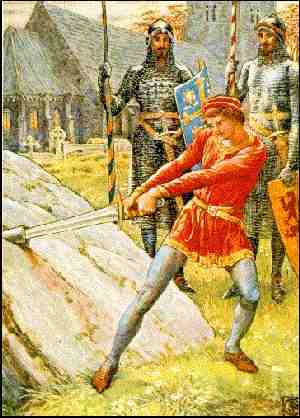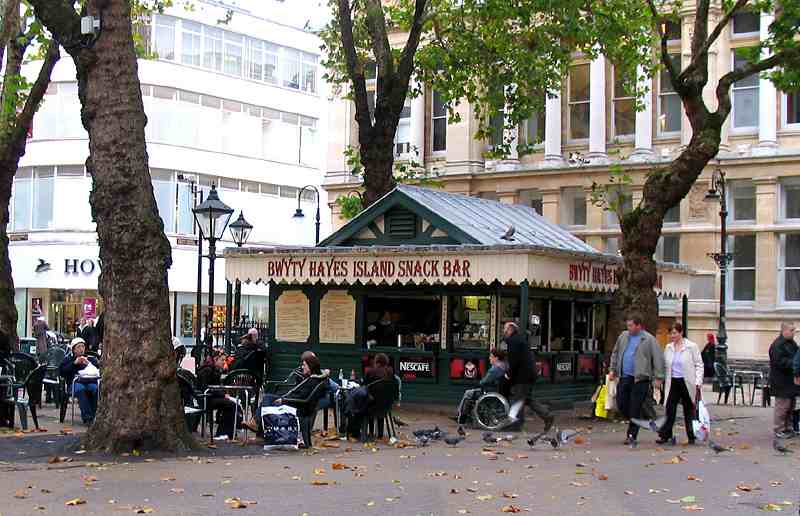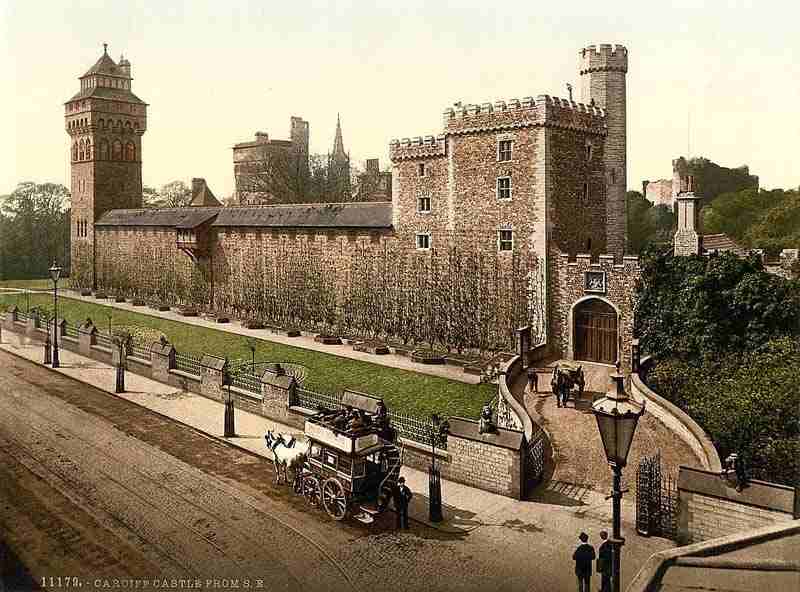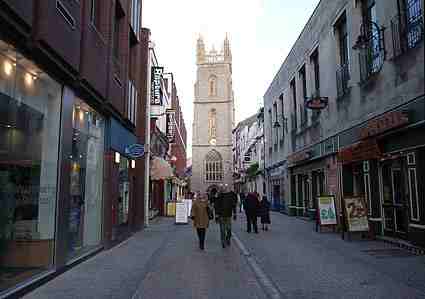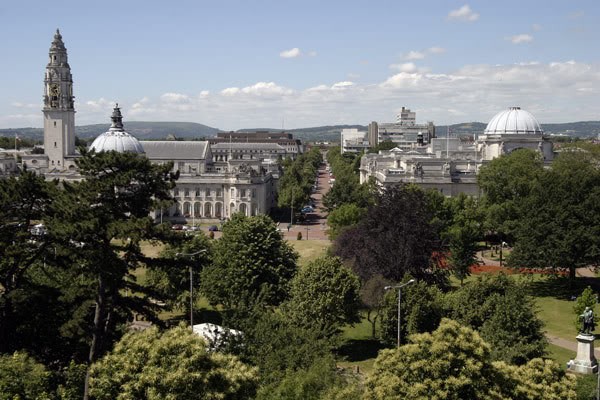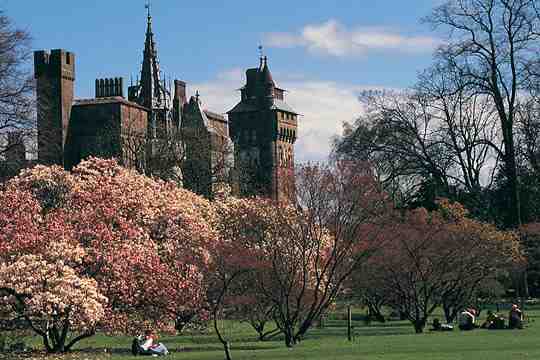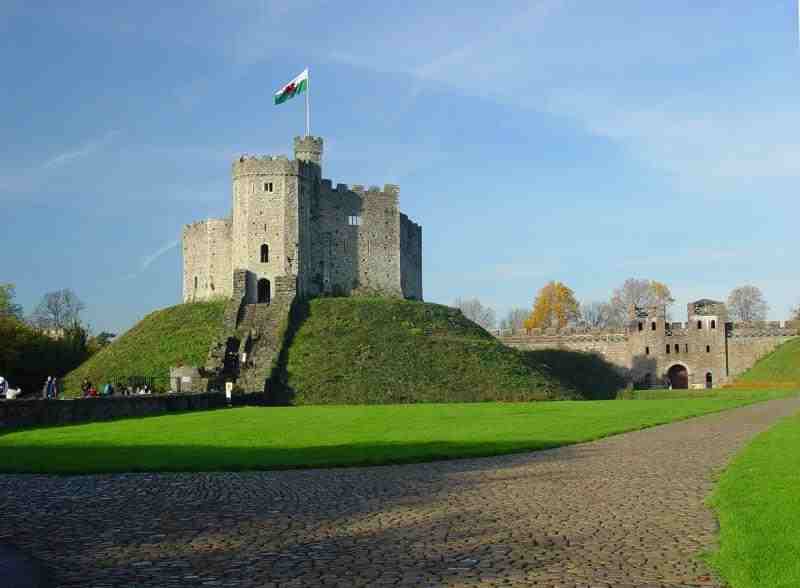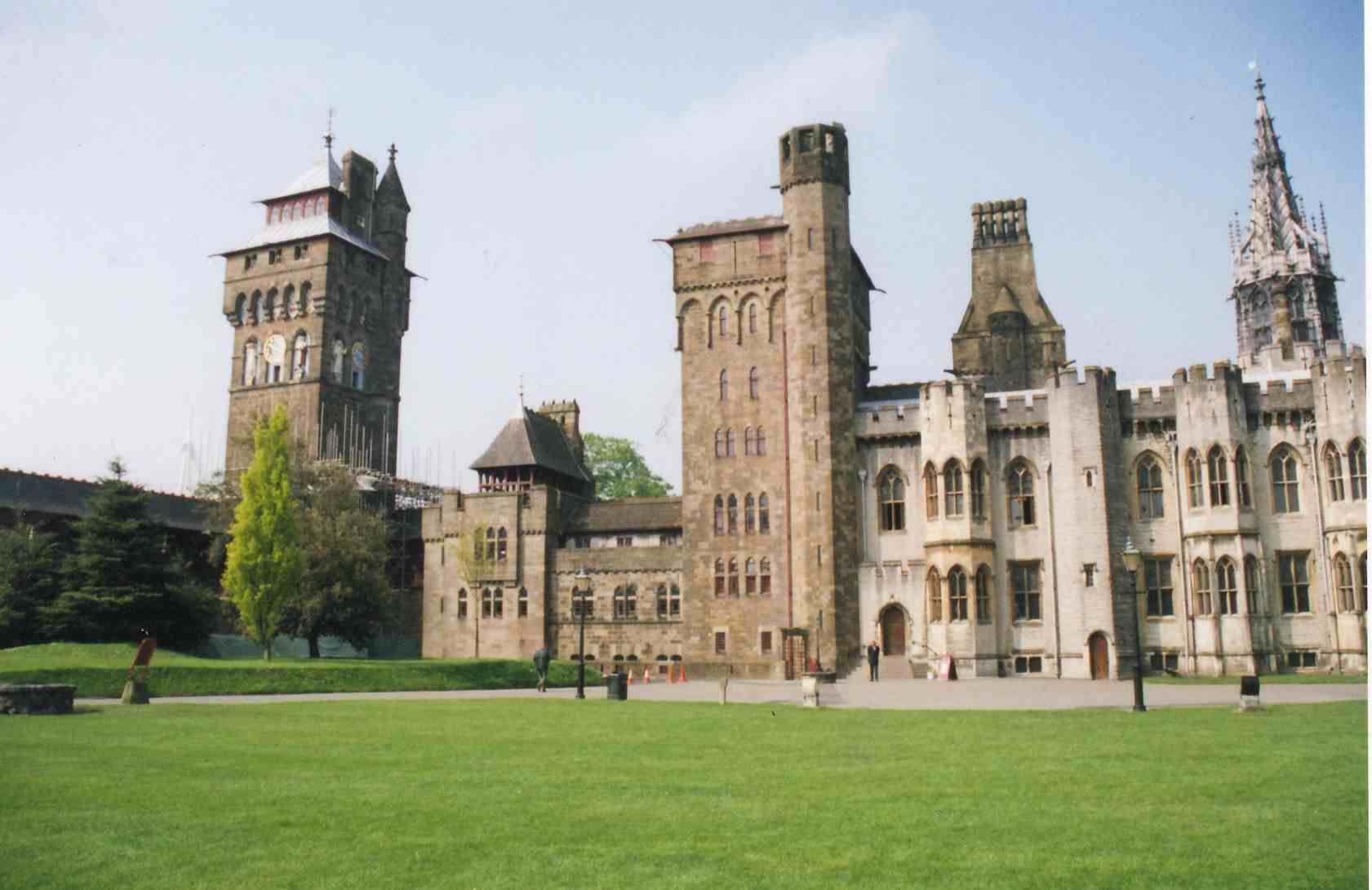THE
OF
THEOSOPHY
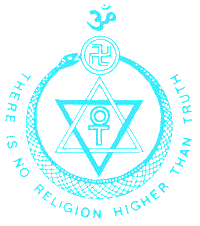
A Definitive Work on Theosophy
By
William Quan Judge
CHAPTER
8
Of
Reincarnation
How man has come to be the complex being that he is
and why, are questions that neither Science nor Religion makes conclusive
answer to. This immortal thinker having such vast powers and possibilities, all
his because of his intimate connection with every secret part of Nature from
which he has been built up,
stands at the top of an immense and silent evolution.
He asks why Nature exists, what the drama of life has for its aim, how that aim
may be attained. But Science and Religion both fail to give a reasonable reply.
Science does not pretend to be able to give the solution, saying that the
examination of things as they are is enough of a task; religion offers an explanation
both illogical and unmeaning and acceptable but to the bigot, as it requires us
to consider the whole of Nature as a mystery and to seek for the meaning and
purpose of life with all its sorrow in the pleasure of a God who cannot be
found out. The educated and enquiring mind knows that dogmatic religion can
only give an answer invented by man while it pretends to be from God.
What then is the universe for, and for what final
purpose is man the immortal thinker here in evolution? It is all for the experience
and emancipation of the soul, for the purpose of raising the entire mass of
manifested matter up to the
stature, nature, and dignity of conscious god-hood.
The great aim is to reach self-consciousness; not through a race or a tribe or
some flavoured nation, but by and through the perfecting, after transformation,
of the whole mass of matter as well as what we now call soul. Nothing is or is
to be left out.
The aim for present man is his initiation into
complete knowledge, and for the other kingdoms below him that they may be
raised up gradually from stage to stage to be in time initiated also. This is
evolution carried to its highest power; it is a magnificent prospect; it makes
of man a god, and gives to every part of nature the possibility of being one
day the same; there is strength and nobility in it, for by this no man is
dwarfed and belittled, for no one is so originally sinful that he cannot rise
above all sin. Treated from the materialistic position of
Science, evolution takes in but half of life; while
the religious conception of it is a mixture of nonsense and fear.
Present religions keep the element of fear, and at the
same time imagine that an Almighty being can think of no other earth but this
and has to govern this one very imperfectly. But the old
theosophical view makes the universe a vast, complete,
and perfect whole.
Now the moment we postulate a double evolution,
physical and spiritual, we have at the same time to admit that it can only be
carried on by reincarnation. This is, in fact, demonstrated by science. It is
shown that the matter of the earth and of all things physical upon it was at
one time either gaseous or molten;
that it cooled; that it altered; that from its
alterations and evolutions at last were produced all the great variety of
things and beings. This, on the physical plane, is transformation or change
from one form to another.
The total mass of matter is about the same as in the
beginning of this globe, with a very minute allowance for some star dust. Hence
it must have been changed over and over again, and thus been physically
reformed and reimbodied. Of course, to be strictly accurate, we cannot use the
word reincarnation, because "incarnate" refers to flesh. Let us say
"reimbodied," and then we see that both for matter and for man there
has been a constant change of form and this is, broadly speaking,
"reincarnation." As to the whole mass of matter, the doctrine is that
it will all be raised to man's estate when man has gone further on himself.
There is no residuum left after man's final salvation
which in a mysterious way is to be disposed of or done away with in some remote
dust-heap of nature. The true doctrine allows for nothing like that, and at the
same time is not afraid to give the true disposition of what would seem to be a
residuum. It is all worked up into other states, for as the philosophy declares
there is no inorganic matter whatever but that every atom is alive and has the
germ of self-consciousness, it must follow that one day it will all have been
changed.
Thus what is now called human flesh is so much matter
that one day was wholly mineral, later on vegetable, and now refined into human
atoms. At a point of time very far from now the present vegetable matter will
have been raised to the animal stage and what we now use as our organic or
fleshy matter will have
changed by transformation through evolution into
self-conscious thinkers, and so on up the whole scale until the time shall come
when what is now known as mineral matter will have passed on to the human stage
and out into that of thinker.
Then at the coming on of another great period of
evolution the mineral matter of that time will be some which is now passing
through its lower transformations on other planets and in other systems of
worlds. This is perhaps a "fanciful" scheme for the men of the
present day, who are so accustomed to being called bad, sinful, weak, and
utterly foolish from their birth that they fear to believe the truth about
themselves, but for the disciples of the ancient theosophists it is not
impossible or fanciful, but is logical and vast. And no doubt it will one day
be admitted by everyone when the mind of the western race has broken away from
Mosaic chronology and Mosaic ideas of men and nature.
Therefore as to reincarnation and metempsychosis we
say that they are first to be applied to the whole cosmos and not alone to man.
But as man is the most interesting object to himself, we will consider in
detail its application to him.
This is the most ancient of doctrines and is believed
in now by more human minds than the number of those who do not hold it. The
millions in the East almost all accept it; it was taught by the Greeks; a large
number of the Chinese now believe it as their forefathers did before them; the
Jews thought it was true,
and it has not disappeared from their religion; and
Jesus, who is called the founder of Christianity, also believed and taught it.
In the early Christian church it was known and taught, and the very best of the
fathers of the church believed and promulgated it.
Christians should remember that Jesus was a Jew who
thought his mission was to Jews, for he says in St. Matthew, "I am not
sent but unto the lost sheep of the house of Israel." He must have well
known the doctrines held by them. They all believed in reincarnation. For them
Moses, Adam, Noah, Seth, and others had returned to earth, and at the time of
Jesus it was currently believed that the old prophet Elias was yet to return.
So we find, first, that Jesus never denied the doctrine, and on various
occasions assented to it, as when he said that John the Baptist was actually
the Elias of old whom the people were expecting. All
this can be seen by consulting St. Matthew in chapters
xvii, xi, and others.
In these it is very clear that Jesus is shown as
approving the doctrine of reincarnation. And following Jesus we find St. Paul,
in Romans ix, speaking of Esau and Jacob being actually in existence before
they were born, and later such great Christian fathers as Origen, Synesius, and
others believing and teaching
the theory. In Proverbs viii, 22, we have Solomon
saying that when the earth was made he was present, and that, long before he
could have been born as Solomon, his delights were in the habitable parts of
the earth with the sons of men. St. John the Revelator says in Revs. iii, 12,
he was told in a vision which refers to the voice of God or the voice of one
speaking for God, that whosoever should overcome would not be under the
necessity of "going out" any more, that is, would not need to be
reincarnated. For five hundred years after Jesus the
doctrine was taught in the church until the council of
Constantinople.
Then a condemnation was passed upon a phase of the
question which has been regarded by many as against reincarnation, but if that
condemnation goes against the words of Jesus it is of no effect. It does go
against him, and thus the church is in the position of saying in effect that
Jesus did not know enough to curse, as it did, a doctrine known and taught in
his day and which was brought to his notice prominently and never condemned but
in fact approved by him.
Christianity is a Jewish religion, and this doctrine
of reincarnation belongs to it historically by succession from the Jews, and
also by reason of its having been taught by Jesus and the early fathers of the
church. If there be any truthful or logical way for the Christian church to get
out of this position -- excluding, of course, dogmas of the church -- the
theosophist would like to be shown it.
Indeed, the theosophist holds that whenever a
professed Christian denies the theory he thereby sets up his judgment against
that of Jesus, who must have known more about the matter than those who follow
him. It is the anathema hurled by the church council and the absence of the
doctrine from the teaching now that have damaged Christianity and made of all
the Christian nations people who pretend to be followers of Jesus and the law
of love, but who really as nations are followers of the Mosaic law of
retaliation. For alone in reincarnation is the answer to all the problems of
life, and in it and Karma is the force that will make men pursue in fact the
ethics they have in theory. It is the aim of the old philosophy to restore this
doctrine to whatsoever religion has lost it; and hence we call it the
"lost chord of Christianity."
But who or what is it that reincarnates? It is not the
body, for that dies and disintegrates; and but few of us would like to be
chained forever to such bodies as we now have, admitted to be infected with
disease except in the case of the savage. It is not the astral body, for, as
shown, that also has its term and must go to pieces after the physical has
gone. Nor is it the passions and desires. They, to be sure, have a very long
term, because they have the power to reproduce themselves in each life so long
as we do not eradicate them. And reincarnation provides for that, since we are
given by it many opportunities of slowly, one by one, killing off the desires
and passions which mar the heavenly
picture of the spiritual man.
It has been shown how the passional part of us
coalesces with the astral after death and makes a seeming being that has a
short life to live while it is disintegrating. When the separation is complete
between the body that has died, the astral body, and the passions and desires
-- life having begun to busy itself with other forms -- the Higher Triad,
Manas, Buddhi, and Atma, who are the real man, immediately go into another
state, and when that state, which is called Devachan, or heaven, is over, they
are attracted back to earth for reincarnation. They are the immortal part of
us; they, in fact, and no other are we. This should be firmly grasped by the
mind, for upon its clear understanding
depends the comprehension of the entire doctrine.
What stands in the way of the modern western man's
seeing this clearly is the long training we have all had in materialistic
science and materializing religion, both of which have made the mere physical
body too prominent. The one has taught of matter alone and the other has
preached the resurrection of the body, a doctrine against common sense, fact,
logic, and testimony. But there is no doubt that the theory of the bodily
resurrection has arisen from the corruption of the older and true teaching.
Resurrection is founded on what Job says about seeing his redeemer in his
flesh, and on St. Paul's remark that the body was raised incorruptible. But Job
was an Egyptian who spoke of seeing his teacher or initiator, who was the
redeemer, and Jesus and Paul referred to the spiritual body only. Although
reincarnation is the law of nature, the complete trinity of
Atma-Buddhi-Manas does not yet fully incarnate in this
race. They use and occupy the body by means of the entrance of Manas, the
lowest of the three, and the other two shine upon it from above, constituting
the God in Heaven. This was symbolized in the old Jewish teaching about the
Heavenly Man who stands with his head in heaven and his feet in hell. That is,
the head Atma and Buddhi are yet in heaven, and the feet, Manas, walk in hell,
which is the body and physical life. For that reason man is not yet fully
conscious, and reincarnations are needed to at last complete the incarnation of
the whole trinity in the body.
When that has been accomplished the race will have
become as gods, and the godlike trinity being in full possession the entire
mass of matter will be perfected and raised up for the next step. This is the
real meaning of "the word made flesh." It was so grand a thing in the
case of any single person, such as Jesus or Buddha, as to be looked upon as a
divine incarnation. And out of this, too, comes the idea of the crucifixion,
for Manas is thus crucified for the purpose of raising up the thief to
paradise.
It is because the trinity is not yet incarnate in the
race that life has so many mysteries, some of which are showing themselves from
day to day in all the various experiments made on and in man.
The physician knows not what life is nor why the body
moves as it does, because the spiritual portion is yet enshrouded in the clouds
of heaven; the scientist is wandering in the dark, confounded and confused by
all that hypnotism and other strange things bring before him, because the
conscious man is out of sight on the very top of the divine mountain, thus
compelling the learned to speak of the "subconscious mind," the
"latent personality," and the like; and the priest can give us no light
at all because he denies man's god-like nature, reduces all to the level of
original sin, and puts upon our conception of God the black mark of inability
to control or manage the creation without invention of expedients to cure
supposed errors. But this old truth solves the riddle and paints God and Nature
in harmonious colors.
Reincarnation does not mean that we go into animal
forms after death, as is believed by some Eastern peoples. "Once a man
always a man" is the saying in the Great Lodge. But it would not be too
much punishment for some men were it possible to condemn them to rebirth in
brute bodies; however nature does not go by sentiment but by law, and we, not
being able to see all, cannot say that the brutal man is brute all through his
nature. And evolution having brought Manas the Thinker and Immortal Person on
to this plane, cannot send him back to the brute which has not Manas.
By looking into two explanations for the literal
acceptation by some people in the East of those laws of Manu which seem to
teach the transmigrating into brutes, insects, and so on, we can see how the
true student of this doctrine will not fall into the same error.
The first is, that the various verses and books
teaching such transmigration have to do with the actual method of reincarnation,
that is, with the explanation of the actual physical processes which have to be
undergone by the Ego in passing from the unembodied to the embodied state, and
also with the roads, ways, or means of descent from the invisible to the
visible plane.
This has not yet been plainly explained in
Theosophical books, because on the one hand it is a delicate matter, and on the
other the details would not as yet be received even by Theosophists with
credence, although one day they will be. And as these details are not of the
greatest importance they are not now expounded.
But as we know that no human body is formed without
the union of the sexes, and that the germs for such production are locked up in
the sexes and must come from food which is taken into the body, it is obvious
that foods have something to do with the reincarnating of the Ego. Now if the
road to reincarnation leads through certain food and none other, it may be
possible that if the Ego gets entangled in food which will not lead to the germ
of physical reproduction, a punishment is indicated where Manu says that such
and such practices will lead to transmigration, which is then a
"hindrance." I throw this out so far for the benefit of certain
theosophists who read these and whose theories on this subject are now rather
vague and in some instances based on quite other
hypotheses.
The second explanation is, that inasmuch as nature
intends us to use the matter which comes into our body and astral body for the
purpose, among others, of benefiting the matter by the impress it gets from
association with the human Ego, if we use it so as to give it only a brutal
impression it must fly back to the animal kingdom to be absorbed there instead
of being refined and kept on the human plane. And as all the matter which the
human Ego gathered to it retains the stamp or photographic impression of the
human being, the matter transmigrates to the lower level when given an animal
impress by the Ego. This actual fact in the great chemical laboratory of nature
could easily be misconstrued by the ignorant. But the present-day students know
that once Manas the Thinker has arrived on the scene he does not return to
baser forms; first, because he does not wish to, and second, because he cannot.
For just as the blood in the body is prevented by valves from rushing back and
engorging the heart, so in this greater system of universal circulation the
door is shut behind the Thinker and prevents his retrocession. Reincarnation as
a doctrine applying to the real man does not teach transmigration into kingdoms
of nature below the human.
______________________
THE
OF
THEOSOPHY

Find out more about
Theosophy with these links
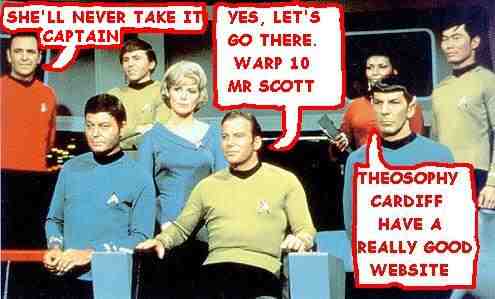
The Cardiff Theosophical Society Website
The
National Wales Theosophy Website
If you run a Theosophy Group, please feel free
to use any of the material on this site
The Most Basic Theosophy
Website in the Universe
A quick overview of Theosophy
and the Theosophical Society
If you run a Theosophy Group you
can use this as an introductory handout.
Theosophy Cardiff’s Instant Guide
One liners and quick explanations
H P Blavatsky is
usually the only
Theosophist that
most people have ever
heard of. Let’s
put that right
Theosophy Cardiff Nirvana Pages
The Voice of the Silence Website
An Independent Theosophical Republic
Links to Free Online Theosophy
Study Resources; Courses, Writings,
The main criteria
for the inclusion of
links on this
site is that they have some
relationship
(however tenuous) to Theosophy
and are
lightweight, amusing or entertaining.
Topics include
Quantum Theory and Socks,
Dick Dastardly and Legendary Blues Singers.
A selection of
articles on Reincarnation
Provided in
response to the large
number of
enquiries we receive at
Cardiff
Theosophical Society on this subject
The Voice of the Silence Website
Caernarvon Castle,
North Wales. circa 1798
Joseph Mallord
William Turner (1775‑1851)
This is for
everyone, you don’t have to live
in Wales to
make good use of this Website
The Seven
Principles of Man
By
Annie Besant
No
Aardvarks were harmed in the
The Spiritual Home of Urban Theosophy
The Earth Base for Evolutionary Theosophy
Reincarnation
This guide has been included in response
to the number of enquiries we receive on this
subject at Cardiff
Theosophical Society
From A Textbook
of Theosophy By C W Leadbeater
How We Remember our Past Lives
Life after Death & Reincarnation
The Slaughter of the
a great demand by the public for lectures on
Reincarnation
Classic Introductory Theosophy Text
A Text Book of Theosophy By C
What Theosophy Is From the Absolute to Man
The Formation of a Solar System The Evolution of Life
The Constitution of Man After Death
Reincarnation
The Purpose of Life The Planetary Chains
The Result of Theosophical Study
The Occult World
By
Alfred Percy
Sinnett
The Occult
World is an treatise on the
Occult and
Occult Phenomena, presented
in readable style, by an early giant of
the
Theosophical Movement.
Preface to the American Edition Introduction
Occultism and its Adepts The Theosophical Society
First Occult Experiences Teachings of Occult Philosophy
Later Occult Phenomena Appendix
by
Annie Besant
THE PHYSICAL PLANE THE ASTRAL PLANE
KÂMALOKA THE MENTAL PLANE DEVACHAN
THE BUDDHIC AND NIRVANIC PLANES
THE THREE KINDS OF KARMA COLLECTIVE KARMA
THE LAW OF SACRIFICE MAN'S
ASCENT
______________________
Annie Besant Visits Cardiff 1924
The Theosophy Cardiff Nirvana Pages
National Wales Centre for Theosophy
Blavatsky Wales Theosophy Group
______________________
_______________________
Theosophy Cardiff Cancels its Affiliation
to the Adyar Based Theosophical Society
and becomes an independent body within
the Worldwide Theosophical Movement
Theosophy Birmingham (England)
The Birmingham Annie Besant Lodge
Theosophy Cardiff has links with the
__________________
The Theosophy Cardiff
Glastonbury Pages
The Theosophy Cardiff Guide to
The Theosophy Cardiff Guide to
The Theosophy Cardiff Guide to
The Terraced Maze of Glastonbury Tor
Glastonbury and
Joseph of Arimathea
The Grave of King Arthur & Guinevere
Views of Glastonbury High Street
The Theosophy Cardiff Guide to
__________________
Camberley, Surrey,
England GU15 2LF
Concerns about
the fate of the wildlife as
Tekels Park is to
be Sold to a Developer
Concerns are
raised about the fate of the
wildlife as The Spiritual
Retreat,
Tekels Park in
Camberley, Surrey,
England is to be
sold to a developer.
Tekels Park is a
50 acre woodland park,
purchased
for the Adyar
Theosophical
In addition to
concern about the park,
many are worried about the
future
of the Tekels
Park Deer as they
Confusion as the Theoversity moves
out of
Tekels Park to Southampton,
Glastonbury &
Chorley in Lancashire while the
leadership claim
that the Theosophical Society will
carry on using
Tekels Park despite its sale to a developer
Anyone planning a
“Spiritual” stay at the
Tekels Park Guest
House should be aware of the sale.
Future of Tekels Park Badgers in Doubt
Party On! Tekels Park Theosophy NOT
Tekels Park & the Loch Ness Monster
A Satirical view of
the sale of Tekels Park
in Camberley,
Surrey to a developer
The Toff’s Guide to the Sale of Tekels Park
What the men in
top hats have to
say about the
sale of Tekels Park
__________________________
An Outline of Theosophy
Charles Webster Leadbeater
Theosophy - What it is How is it Known?
The Method of Observation General Principles
The Three Great Truths Advantage Gained from this Knowledge
The Deity
The Divine Scheme The Constitution of Man
The True Man
Reincarnation
The Wider Outlook
Death Man’s Past and Future Cause and Effect
______________________________
A B C D EFG H IJ KL M N OP QR S T UV WXYZ
Complete Theosophical Glossary in Plain Text Format
1.22MB
Quick Explanations with Links to More Detailed Info
What is Theosophy ? Theosophy Defined (More Detail)
Three Fundamental Propositions Key Concepts of Theosophy
Cosmogenesis Anthropogenesis Root Races
Ascended Masters After Death States
The Seven Principles of Man Karma
Reincarnation Helena Petrovna Blavatsky
Colonel Henry Steel Olcott William Quan Judge
The Start of the Theosophical
Society
History of the Theosophical
Society
Theosophical Society Presidents
History of the Theosophical
Society in Wales
The Three Objectives of the
Theosophical Society
Explanation of the Theosophical
Society Emblem
The Theosophical Order of
Service (TOS)
Glossaries of Theosophical Terms
Index of Searchable
Full Text Versions of
Definitive
Theosophical Works
H P Blavatsky’s Secret Doctrine
Isis Unveiled by H P Blavatsky
H P Blavatsky’s Esoteric Glossary
Mahatma Letters to A P Sinnett 1 - 25
A Modern Revival of Ancient Wisdom
(Selection of Articles by H P Blavatsky)
The Secret Doctrine – Volume 3
A compilation of H P Blavatsky’s
writings published after her death
Esoteric Christianity or the Lesser Mysteries
The Early Teachings of The Masters
A Collection of Fugitive Fragments
Fundamentals of the Esoteric Philosophy
Mystical,
Philosophical, Theosophical, Historical
and Scientific
Essays Selected from "The Theosophist"
Edited by George Robert Stow Mead
From Talks on the Path of Occultism - Vol. II
In the Twilight”
Series of Articles
The In the Twilight”
series appeared during
1898 in The
Theosophical Review and
from 1909-1913 in The Theosophist.
compiled from
information supplied by
her relatives and friends and edited by A P Sinnett
Letters and
Talks on Theosophy and the Theosophical Life
Obras Teosoficas En Espanol
Theosophische Schriften Auf Deutsch
An Outstanding
Introduction to Theosophy
By a student of
Katherine Tingley
Elementary Theosophy Who is the Man? Body and Soul
Body, Soul and Spirit Reincarnation Karma
Nature is infinite in space and time --
boundless and eternal, unfathomable and ineffable. The all-pervading essence of
infinite nature can be called space, consciousness, life, substance, force,
energy, divinity -- all of which are fundamentally one.
2) The finite and the infinite
Nature is a unity in diversity, one in
essence, manifold in form. The infinite whole is composed of an infinite number
of finite wholes -- the relatively stable and autonomous things (natural
systems or artefacts) that we observe around us. Every natural system is not only
a conscious, living, substantial entity, but is consciousness-life-substance,
of a particular range of density and form. Infinite nature is an abstraction,
not an entity; it therefore does not act or change and has no attributes. The
finite, concrete systems of which it is composed, on the other hand, move and
change, act and interact, and possess attributes. They are composite,
inhomogeneous, and ultimately transient.
3) Vibration/worlds within worlds
The one essence manifests not only in
infinitely varied forms, and on infinitely varied scales, but also in
infinitely varying degrees of spirituality and substantiality, comprising an
infinite spectrum of vibration or density. There is therefore an endless series
of interpenetrating, interacting worlds within worlds, systems within systems.
The energy-substances of higher planes or
subplanes (a plane being a particular range of vibration) are relatively more
homogeneous and less differentiated than those of lower planes or subplanes.
Just as boundless space is comprised of
endless finite units of space, so eternal duration is comprised of endless
finite units of time. Space is the infinite totality of worlds within worlds,
but appears predominantly empty because only a tiny fraction of the
energy-substances composing it are perceptible and tangible to an entity at any
particular moment. Time is a concept we use to quantify the rate at which
events occur; it is a function of
change and motion, and presupposes a
succession of cause and effect. Every entity is extended in space and changes
'in time'.
All change (of position, substance, or
form) is the result of causes; there is no such thing as absolute chance.
Nothing can happen for no reason at all for nothing exists in isolation;
everything is part of an intricate web of causal interconnections and
interactions. The keynote of nature is harmony: every action is automatically
followed by an equal and opposite reaction, which sooner or later rebounds upon
the originator of the initial act. Thus, all our thoughts and deeds will
eventually bring us 'fortune' or 'misfortune' according to the degree to which
they were harmonious or disharmonious. In the long term, perfect justice
prevails in nature.
Because nature is fundamentally one, and
the same basic habits and structural, geometric, and evolutionary principles
apply throughout, there are correspondences between microcosm and macrocosm.
The principle of analogy -- as above, so below -- is a vital tool in our
efforts to understand reality.
All finite systems and their attributes are
relative. For any entity, energy-substances vibrating within the same range of
frequencies as its outer body are 'physical' matter, and finer grades of
substance are what we call energy, force, thought, desire, mind, spirit,
consciousness, but these are just as material to entities on the corresponding
planes as our physical world is to us. Distance and time units are also
relative: an atom is a solar system on its own scale, reembodying perhaps
millions of times in what for us is one second, and our whole galaxy may be a
molecule in some supercosmic entity, for which a million of our years is just a
second. The range of scale is infinite: matter-consciousness is both infinitely
divisible and infinitely aggregative.
All natural systems consist of smaller
systems and form part of larger systems. Hierarchies extend both 'horizontally'
(on the same plane) and 'vertically' or inwardly (to higher and lower planes).
On the horizontal level, subatomic particles form atoms, which combine into
molecules, which arrange themselves into cells, which form tissues and organs,
which form part of organisms, which form part of ecosystems, which form part of
planets, solar systems, galaxies, etc. The constitution of worlds and of the
organisms that inhabit them form 'vertical' hierarchies, and can be divided
into several interpenetrating layers or elements, from physical-astral to
psychomental to spiritual-divine, each of which can be further divided.
The human constitution can be divided up in
several different ways: e.g. into a trinity of body, soul, and spirit; or into
7 'principles' -- a lower quaternary consisting of physical body, astral
model-body, life-energy, and lower thoughts and desires, and an upper triad
consisting of higher mind (reincarnating ego), spiritual intuition, and inner
god. A planet or star can be regarded as a 'chain' of 12 globes, existing on 7
planes, each globe comprising several subplanes.
The highest part of every multilevelled
organism or hierarchy is its spiritual summit or 'absolute', meaning a
collective entity or 'deity' which is relatively perfected in relation to the
hierarchy in question. But the most 'spiritual' pole of one hierarchy is the
most 'material' pole of the next, superior hierarchy, just as the lowest pole
of one hierarchy is the highest pole of the one below.
Each level of a hierarchical system
exercises a formative and organizing influence on the lower levels (through the
patterns and prototypes stored up from past cycles of activity), while the
lower levels in turn react upon the higher. A system is therefore formed and
organized mainly from within outwards, from the inner levels of its
constitution, which are relatively more enduring and developed than the outer
levels. This inner guidance is sometimes active and selfconscious, as in our
acts of free will (constrained, however, by karmic tendencies from the past),
and sometimes it is automatic and passive, giving rise to our own automatic
bodily functions and habitual and instinctual behavior, and to the orderly,
lawlike operations of nature in general. The 'laws' of nature are therefore the
habits of the various grades of conscious entities that compose reality,
ranging from higher intelligences
(collectively forming the universal mind) to elemental nature-forces.
10) Consciousness and its vehicles
The core of every entity -- whether atom,
human, planet, or star -- is a monad, a unit of consciousness-life-substance,
which acts through a series of more material vehicles or bodies. The monad or
self in which the consciousness of a particular organism is focused is animated
by higher monads and expresses itself through a series of lesser monads, each
of which is the nucleus of one of the lower vehicles of the entity in question.
The following monads can be distinguished: the divine or galactic monad, the
spiritual or solar monad, the higher human or planetary-chain monad, the lower
human or globe monad, and the animal, vital-astral, and physical monads. At our
present stage of evolution, we are essentially the lower human monad, and our
task is to raise our consciousness from the animal-human to the spiritual-human
level of it.
Evolution means the unfolding, the bringing
into active manifestation, of latent powers and faculties 'involved' in a
previous cycle of evolution. It is the building of ever fitter vehicles for the
expression of the mental and spiritual powers of the monad. The more
sophisticated the lower vehicles of an entity, the greater their ability to express
the powers locked up in the higher levels of its constitution. Thus all things
are alive and conscious, but the degree of manifest life and consciousness is
extremely varied.
Evolution results from the interplay of
inner impulses and environmental stimuli. Ever building on and modifying the
patterns of the past, nature is infinitely creative.
12) Cyclic evolution/re-embodiment
Cyclic evolution is a fundamental habit of
nature. A period of evolutionary activity is followed by a period of rest. All
natural systems evolve through re-embodiment. Entities are born from a seed or
nucleus remaining from the previous evolutionary cycle of the monad, develop to
maturity, grow old, and pass away, only to re-embody in a new form after a
period of rest. Each new embodiment is the product of past karma and present
choices.
Nothing comes from nothing: matter and
energy can be neither created nor destroyed, but only transformed. Everything
evolves from preexisting material. The growth of the body of an organism is
initiated on inner planes, and involves the transformation of higher
energy-substances into lower, more material ones, together with the attraction
of matter from the environment.
When an organism has exhausted the store of
vital energy with which it is born, the coordinating force of the indwelling
monad is withdrawn, and the organism 'dies', i.e. falls apart as a unit, and
its constituent components go their separate ways. The lower vehicles decompose
on their respective subplanes, while, in the case of humans, the reincarnating
ego enters a dreamlike state of rest and assimilates the experiences of the
previous incarnation. When the time comes for the next embodiment, the
reincarnating ego clothes itself in many of the same atoms of different grades
that it had used previously, bearing the appropriate karmic impress. The same
basic processes of birth, death,
and rebirth apply to all entities, from atoms to humans to stars.
14) Evolution and involution of worlds
Worlds or spheres, such as planets and
stars, are composed of, and provide the field for the evolution of, 10 kingdoms
-- 3 elemental kingdoms, mineral, plant, animal, and human kingdoms, and 3
spiritual kingdoms. The impulse for a new manifestation of a world issues from
its spiritual summit or hierarch, from which emanate a series of steadily
denser globes or planes; the One expands into the many. During the first half
of the evolutionary cycle (the arc of descent) the energy-substances of each
plane materialize or condense, while during the second half (the arc of ascent)
the trend is towards dematerialization or etherealization, as globes and
entities are reabsorbed into the spiritual hierarch for a period of nirvanic
rest. The descending arc is characterized by the evolution of matter and
involution of spirit, while the ascending arc is characterized by the evolution
of spirit and involution of matter.
In each grand cycle of evolution,
comprising many planetary embodiments, a monad begins as an unselfconsciousness
god-spark, embodies in every kingdom of nature for the purpose of gaining
experience and unfolding its inherent faculties, and ends the cycle as a self
conscious god. Elementals ('baby monads') have no free choice, but
automatically act in harmony with one another and the rest of nature. In each
successive kingdom differentiation and individuality increase, and reach their
peak in the human kingdom with the attainment of selfconsciousness and a large
measure of free will.
In the human kingdom in particular,
self-directed evolution comes into its own. There is no superior power granting
privileges or handing out favours; we evolve according to our karmic merits and
demerits. As we progress through the spiritual kingdoms we become increasingly
at one again with nature, and willingly 'sacrifice' our circumscribed
selfconscious freedoms (especially the freedom to 'do our own thing') in order
to work in peace and harmony with the greater whole of which we form an
integral part. The highest gods of one hierarchy or world-system begin as
elementals in the next. The matter of any plane is composed of aggregated,
crystallized monads in their nirvanic sleep, and the spiritual and divine
entities embodied as planets and stars are the electrons and atomic nuclei --
the material building blocks -- of worlds on even larger scales. Evolution is
without beginning and without end, an endless adventure through the fields of
infinitude, in which there are always new worlds of experience in which to
become selfconscious masters of life.
There is no absolute separateness in
nature. All things are made of the same essence, have the same spiritual-divine
potential, and are interlinked by magnetic ties of sympathy. It is impossible
to realize our full potential, unless we recognize the spiritual unity of all
living beings and make universal brotherhood the keynote of our lives.
Hey Look!
Theosophy in Cardiff
Guide to the
Theosophy Wales King Arthur Pages
Arthur draws the Sword from the Stone
The Knights of The Round Table
The Roman Amphitheatre at Caerleon,
Eamont Bridge, Nr Penrith, Cumbria, England.
Geoffrey of Monmouth
(History of the Kings of Britain)
The reliabilty of this work has long been a subject of
debate but it is the first definitive account of Arthur’s
Reign
and one which puts Arthur in a historcal context.
and his version’s political agenda
According to Geoffrey of Monmouth
The first written mention of Arthur as a heroic figure
The British leader who fought twelve battles
King Arthur’s ninth victory at
The Battle of the City of the Legion
King Arthur ambushes an advancing Saxon
army then defeats them at Liddington Castle,
Badbury, Near Swindon, Wiltshire, England.
King Arthur’s twelfth and last victory against the Saxons
Traditionally Arthur’s last battle in which he was
mortally wounded although his side went on to win
No contemporary writings or accounts of his life
but he is placed 50 to 100 years after the accepted
King Arthur period. He refers to Arthur in his inspiring
poems but the earliest written record of these dates
from over three hundred years after Taliesin’s death.
Pendragon Castle
Mallerstang Valley, Nr Kirkby Stephen,
A 12th Century Norman ruin on the site of what is
reputed to have been a stronghold of Uther Pendragon
From
wise child with no earthly father to
Megastar
of Arthurian Legend
History of the Kings of Britain
Drawn from the Stone or received from the Lady of the Lake.
Sir Thomas Malory’s Le Morte d’Arthur has both versions
with both swords called Excalibur. Other versions
5th & 6th Century Timeline of Britain
From the departure of the Romans from
Britain to the establishment of sizeable
Anglo-Saxon Kingdoms
Glossary of
Arthur’s uncle:- The puppet ruler of the Britons
controlled and eventually killed by Vortigern
Amesbury, Wiltshire, England. Circa 450CE
An alleged massacre of Celtic Nobility by the Saxons
History of the Kings of Britain
Athrwys / Arthrwys
King of Ergyng
Circa 618 - 655 CE
Latin: Artorius; English: Arthur
A warrior King born in Gwent and associated with
Caerleon, a possible Camelot. Although over 100 years
later that the accepted Arthur period, the exploits of
Athrwys may have contributed to the King Arthur Legend.
He became King of Ergyng, a kingdom between
Gwent and Brycheiniog (Brecon)
Angles under Ida seized the Celtic Kingdom of
Bernaccia in North East England in 547 CE forcing
Although much later than the accepted King Arthur
period, the events of Morgan Bulc’s 50 year campaign
to regain his kingdom may have contributed to
Old Welsh: Guorthigirn;
Anglo-Saxon: Wyrtgeorn;
Breton: Gurthiern; Modern Welsh; Gwrtheyrn;
*********************************
An earlier ruler than King Arthur and not a heroic figure.
He is credited with policies that weakened Celtic Britain
to a point from which it never recovered.
Although there are no contemporary accounts of
his rule, there is more written evidence for his
existence than of King Arthur.
How Sir Lancelot slew two giants,
From Sir Thomas Malory’s Le Morte d’Arthur
How Sir Lancelot rode disguised
in Sir Kay's harness, and how he
From Sir Thomas Malory’s Le Morte d’Arthur
How Sir Lancelot jousted against
four knights of the Round Table,
From Sir Thomas Malory’s Le Morte d’Arthur
Try these if you are looking for a local
Theosophy Group or Centre
UK Listing of Theosophical Groups
Cardiff
Theosophical Society in Wales
Cardiff, Wales, UK. CF24 – 1DL
_____________________________
Cardiff Picture Gallery
Cardiff
Millennium Stadium
The Hayes Cafe
Outside Cardiff Castle Circa 1890
Church Street
Cardiff View
Royal
The Original
Norman Castle which stands inside
the Grounds of
the later
Inside the
Grounds at
Cardiff Street
Entertainment
Cardiff Indoor
Market
Cardiff
Theosophical Society in Wales
